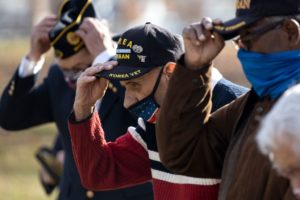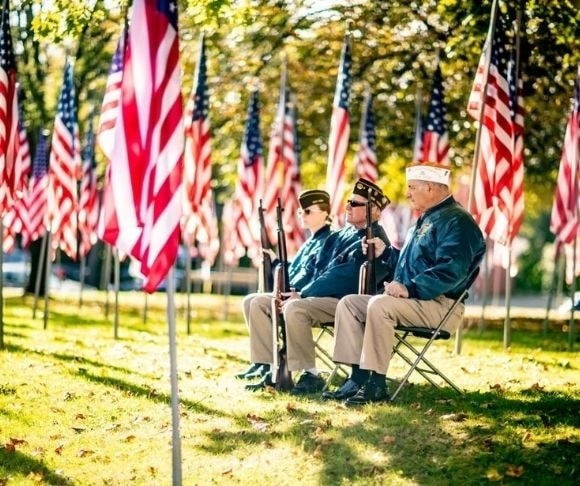All Americans who have performed military service have a common bond: They are veterans. They gave some of themselves to the country’s call. And, unfortunately, too many made the ultimate sacrifice. Our nation sets aside a day of remembrance for their personal and their family’s sacrifice, to remind fellow citizens that their freedom, comfort, and pursuit of happiness came at a price. Whether drafted, as many were during the Vietnam War, or volunteer, they are a special breed. However, the population of veterans is becoming more exclusive and precious as the numbers of those having served in the armed forces declines as a percentage of the U.S. population. In an analysis of America’s veterans titled “The changing face of America’s veteran population,” the Pew Research Center found that, currently, about 19 million veterans represent less than 10% of the adult population.
Of those, military members who served in the Gulf War, from 1990 to 2021, have surpassed the Vietnam-era veterans, as Pew reports:
“Gulf War-era veterans now account for the largest share of all US veterans, having surpassed Vietnam-era veterans in 2016, according to the VA’s 2018 population model estimates. VA estimates for 2021 indicate there are 5.9 million American veterans who served during the Vietnam era and 7.8 million who served in the Gulf War era, which spans from August 1990 through the present.”
 Additionally, of U.S. veterans, more than three-quarters (78%) served in wartime. Nonetheless, the portion of the total U.S. population with military experience is declining. From 1980 to 2018, living veterans declined from 18% of U.S. adults to 7%. The number of active-duty military members has dropped dramatically, “from 3.5 million in 1968, during the military draft era, to about 1.4 million (or less than 1% of all US adults) in today’s all-volunteer force.”
Additionally, of U.S. veterans, more than three-quarters (78%) served in wartime. Nonetheless, the portion of the total U.S. population with military experience is declining. From 1980 to 2018, living veterans declined from 18% of U.S. adults to 7%. The number of active-duty military members has dropped dramatically, “from 3.5 million in 1968, during the military draft era, to about 1.4 million (or less than 1% of all US adults) in today’s all-volunteer force.”
Though the declining numbers of military veterans as a percentage of the U.S. population portends an American citizenry where very few have sacrificed to preserve American values, a statistic that should give greater pause is the number of members of Congress who have military service. Again, from the Pew Research Center:
“As the share of Americans who are veterans has declined, so has the share of legislators who have previously served in the military. In the current Congress, 17% of lawmakers in both houses had prior military service, down drastically from just a few decades ago. The share of senators who are veterans reached a post-Korean War peak of 81% in 1975, while the share among House members peaked in 1967 at 75%.”
These percentages should cause concern. If Congress is going to send young men and women to foreign countries to fight for the homeland, parents of soldiers, sailors, airmen, and guardians would like legislators to understand what they are asking. Sending America’s youth into combat and other dangers should come with a grasp of the challenge. As it is, fewer congressional leaders have any such experience. To acknowledge this problem, both Democrats and Republicans make special efforts to recruit military veterans to serve in Congress.
Despite those efforts, Leo Shane III reported in Military Times, “The number of military veterans in Congress will drop again next session [the 117th session of Congress], reaching the lowest level of members with some military experience since at least World War II.”
As women take more prominent positions in the U.S. Armed Forces, veteran women legislators are increasingly needed. But the trend is not going in that direction. As the American Legion explained on its website:
“The 2020 races also saw a record number of women veterans running for office. However, the number of women veterans who were elected to serve in the new Congress decreased by one from the last Congress. Only six women currently serving in Congress have military experience.”

(Staff photo by Brianna Soukup/Portland Press Herald via Getty Images)
When the country asks for extraordinary performance from its military, those members of Congress who make that request should understand thoroughly what they are talking about. That understanding appears to be vanishing, as the numbers of military veterans are expected to decline even further in the next two decades.
Yet, veterans continue to be revered in American society and deservedly so. A 2019 Pew Research Center survey of U.S. veterans and adults generally as part of a more extensive research study, “The American Veteran Experience and the Post 9/11 Generation,” revealed the following: “Large shares among veterans and the US public say people who have served in the military are more disciplined, patriotic, and loyal than those who have not served.” These traits serve our nation admirably, and we desperately need them today as the nation reels from polarizing political and social forces.
Veterans stand as the model for willingness to serve. In the Pentagon’s River Entrance, in the stairwell between the second and third floors leading to the Secretary of Defense’s suite of offices, there is a large painting of Isaiah talking with God. The inscription is Isaiah 6:8, which reads, “Whom shall I send and who will go for us? … Here am I. Send me.” As The Wall Street Journal recorded in 2017, the verse “has served both as an inspiration for countless service members who pass by it and as a reminder to those who may not have served of the nobility of those who have answered, ‘send me.’”
Thank you, veterans, on your special day.
The views expressed are those of the author and not of any other affiliation.
~ Read more from Dave Patterson.




